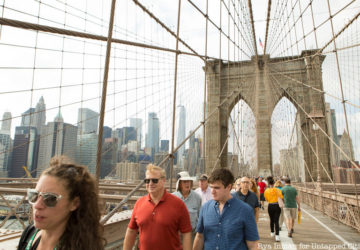 Early construction of the Cathedral of St. John the Divine circa 1902. Image via Library of Congress
Early construction of the Cathedral of St. John the Divine circa 1902. Image via Library of Congress
Today, it’s hard to imagine Morningside Heights without the flurry of students hurrying to class at Columbia University. It may be even harder to imagine it without some of its signature architecture: the gothic Cathedral of St. John the Divine, the largest cathedral in the world, Riverside Church, with its former bowling alley, or Grant’s Tomb along the Hudson River. But Morningside Heights got an exciting start in the history of New York City (and America, as it turns out)!
The Battle of Harlem Heights in September 1776 was a morale turning point in the Revolutionary War, particularly after the Americans suffered losses in the Battle of Long Island and at Kips Bay. The Americans and the British skirmished at what is now 106th Street and Broadway and the fighting extended northwards to 125th Street. The majority of the battle was fought around 120th Street and Riverside Drive, but the Americans were able to push the British back to 106th Street. George Washington noted of this maneuver, “This little advantage has inspired our troops prodigiously. They find it only requires resolution and good officers to make an enemy give way.” Today, a plaque on Columbia University’s Math Building near 118th Street and Broadway marks the historic battle.
During the colonial era, the land that is now Morningside Heights was farmland. But even before the revolution, things were in motion to create a public hospital in New York. Doctors from Columbia University (then King’s College) petitioned the colonial government and received a charter to build the “Society of the Hospital in the City of New York, in America,” later called the “Society of the New York Hospital.” Between 1816 and 1818, 26 acres of farmland were purchased by the charter organization, which became the Bloomingdale Asylum, named after Bloomingdale Road which is now Broadway. The first building was constructed in 1821 and expansion had commenced by 1826.





